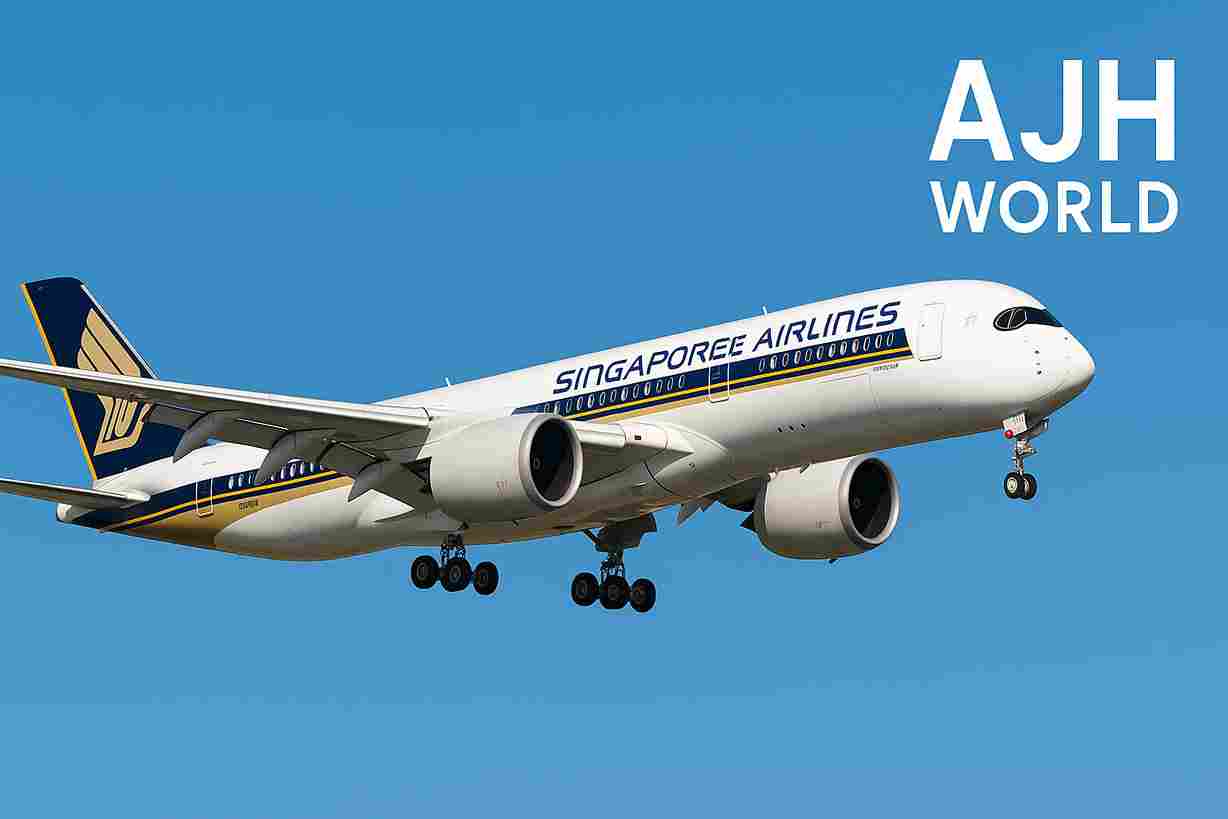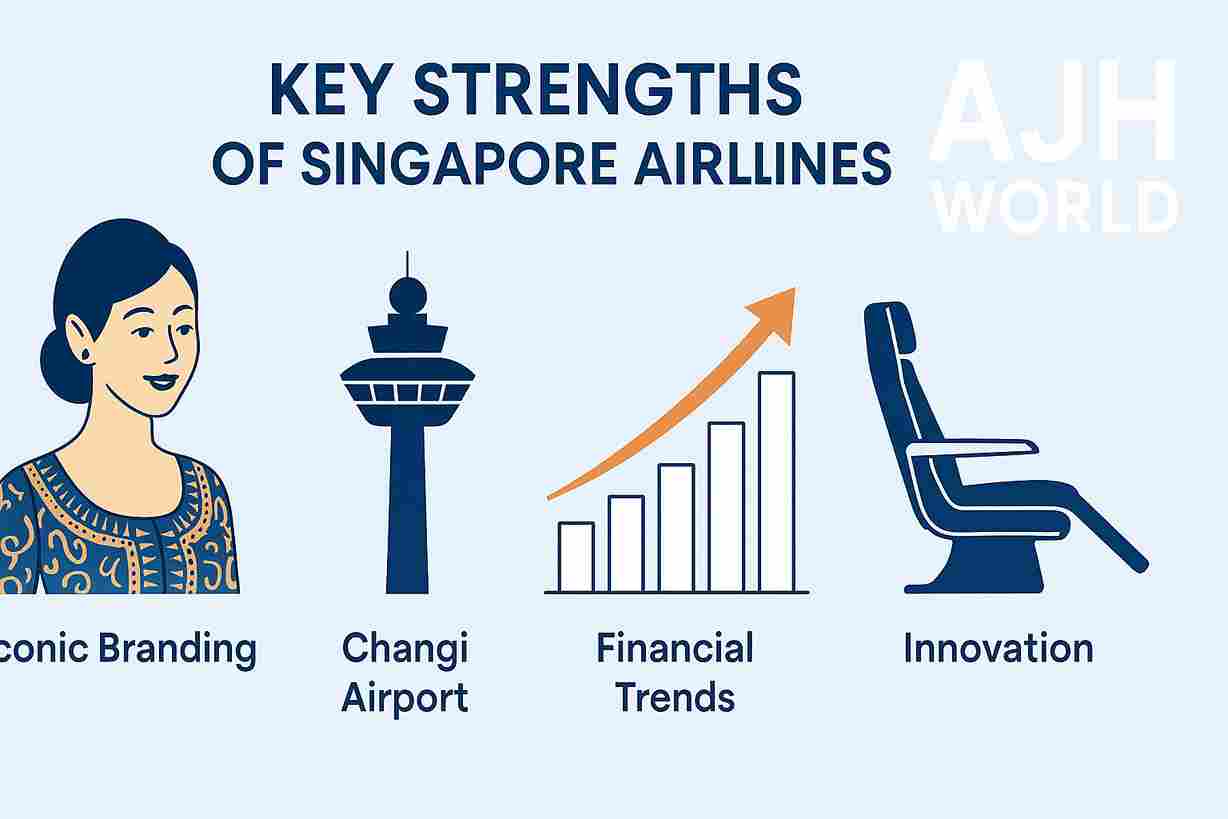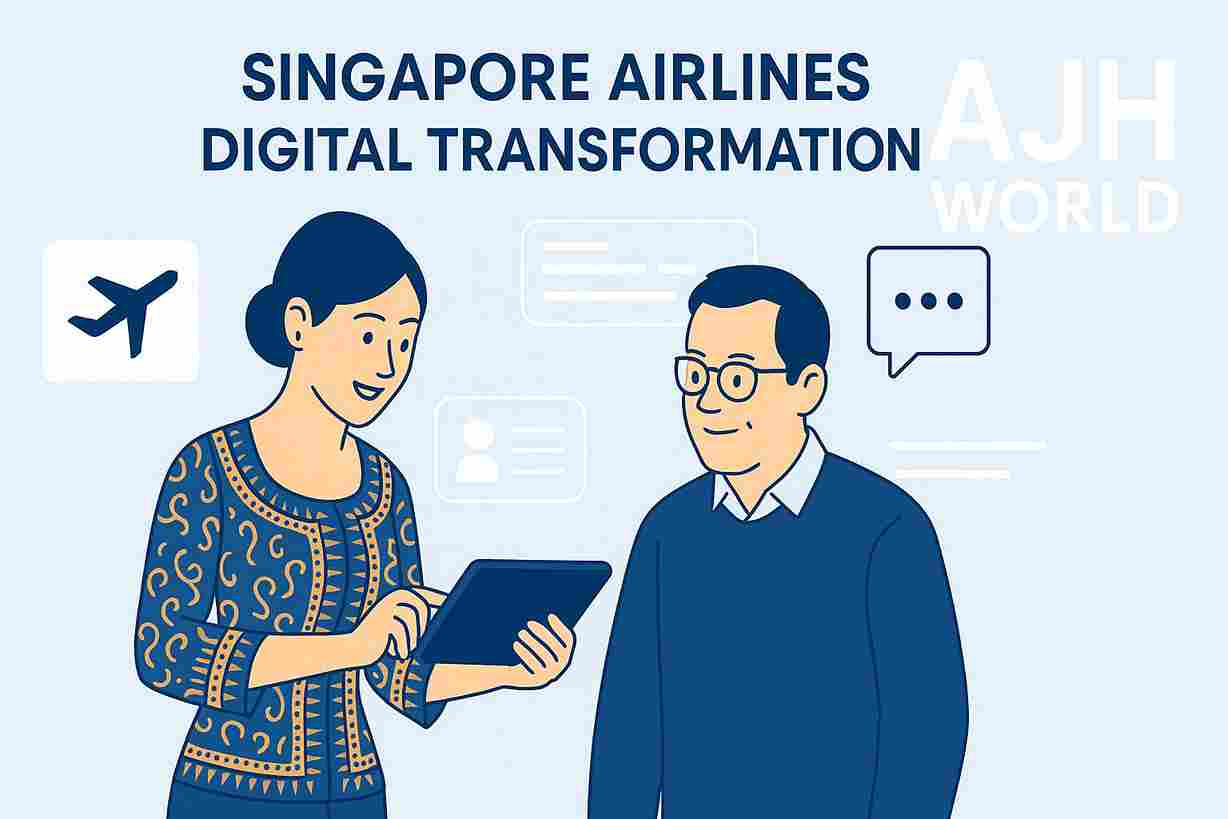Discover how the aviation giant maintains its premier status and robust strength in a challenging global landscape – and why it matters for travellers and the industry.
Few names in aviation command as much respect and admiration as Singapore Airlines. For decades, this island nation’s flag carrier has been synonymous with impeccable service, cutting-edge innovation, and an almost legendary in-flight experience.
However, the global airline industry is a notoriously volatile arena. From fuel price shocks and fierce competition to geopolitical uncertainties and shifting consumer demands, the pressures are immense. Even a titan like Singapore Airlines isn’t immune to these forces. Understanding how such a prominent player weathers these storms provides crucial insights not only into the airline’s operational prowess but also into broader aviation trends and the future of premium air travel.
n this comprehensive analysis, we’ll delve into the specific industry pressures facing Singapore Airlines, explore the core strengths that enable it to maintain a formidable position, and examine the strategies it employs to navigate the complexities of modern aviation. Whether you’re a frequent flyer, an industry enthusiast, or simply curious about what makes a world-class airline tick, you’ll gain a clearer picture of Singapore Airlines‘ enduring success and its prospects.

The Unyielding Gauntlet: Industry Pressures Weighing on Aviation
The aviation industry is perpetually navigating a complex web of challenges. For Singapore Airlines, these are not abstract threats but daily operational realities that demand constant vigilance and strategic adaptation.
Intense Competition: LCCs, ME3, and Full-Service Rivals
Singapore Airlines faces a multi-front competitive landscape.
-
Low-Cost Carriers (LCCs): Proliferating across Asia, LCCs like AirAsia and Lion Air (and even SIA’s own Scoot, managed strategically) put pressure on short-haul and leisure routes with aggressive pricing. While SIA targets a different segment, price sensitivity in the overall market cannot be ignored.
-
Middle Eastern Carriers (ME3): Emirates, Qatar Airways, and Etihad Airways, with their strong hub strategies and often government backing, compete fiercely on long-haul routes, particularly between Europe/North America and Asia/Australia. They often match or even try to exceed SIA’s premium offerings.
-
Other Full-Service Carriers: Regional rivals like Cathay Pacific, JAL, ANA, and even resurgent Western airlines continually innovate, vying for the same lucrative premium passenger base that Singapore Airlines has cultivated.
Economic Volatility & Geopolitical Risks
Global economic slowdowns, recessions in key markets (Europe, North America, China), and trade tensions directly impact travel demand, especially for premium and business travel – a core segment for Singapore Airlines. Geopolitical instability, conflicts, or health crises (as seen with COVID-19) can drastically alter travel patterns, close airspace, and erode consumer confidence almost overnight. SIA’s global network, while a strength, also means exposure to diverse regional instabilities.
Fluctuating Fuel Prices & Operational Costs
Jet fuel is one of the largest and most volatile operating expenses for any airline. Sudden spikes can severely impact profitability. Singapore Airlines employs hedging strategies, but these only offer partial protection. Beyond fuel, labour costs, maintenance expenses for a modern fleet, and airport fees contribute to a high-cost operating environment, especially for a premium carrier committed to high standards.
The Sustainability Imperative: Environmental Pressures
The airline industry is under increasing scrutiny for its carbon footprint. Passengers, investors, and regulators are demanding greener operations. This means significant investment in newer, more fuel-efficient aircraft, research and adoption of Sustainable Aviation Fuels (SAF) – which are currently expensive and in limited supply – and implementing carbon offset programs. For Singapore Airlines, maintaining its premium brand now also means demonstrating strong environmental stewardship.
Evolving Passenger Expectations Post-Pandemic
The COVID-19 pandemic reshaped travel. Passengers now have heightened expectations around health, safety, flexibility in bookings, and digital convenience. There’s also a trend towards “revenge travel” but also a more discerning traveller who values unique experiences and seamless journeys. Singapore Airlines must continually adapt its service model to meet these dynamic demands, from onboard protocols to digital interfaces.
The Pillars of Strength: What Keeps Singapore Airlines Aloft?
Despite the formidable pressures, Singapore Airlines has consistently demonstrated remarkable resilience. This isn’t by chance but a result of deeply ingrained strengths cultivated over decades.

Unwavering Brand Reputation & Service Excellence
The “Singapore Girl” is more than a marketing icon; she represents a promise of exceptional, intuitive, and graceful service. This relentless focus on customer experience – from check-in to arrival – has built immense brand loyalty and allows Singapore Airlines to command a price premium. Awards like “World’s Best Airline” from Skytrax are frequent, reinforcing this global perception of quality.
Strategic Changi Hub & Network Prowess
Singapore Changi Airport, consistently ranked among the world’s best, is a critical asset. Its efficiency, connectivity, and passenger amenities make it an ideal transit hub. Singapore Airlines leverages this masterfully, connecting traffic flows between Europe, Asia, Oceania, and increasingly, North America. Their network planning is sophisticated, balancing frequency, aircraft type, and route profitability. about Changi Airport
Financial Prudence & Robust Balance Sheet
Historically, Singapore Airlines has maintained a strong balance sheet with healthy cash reserves. This financial discipline, often involving cautious capacity management and astute aircraft purchasing deals, has enabled it to weather economic downturns better than many competitors. The support from its majority shareholder, Temasek Holdings (a Singaporean sovereign wealth fund), also provides a layer of stability, particularly during unprecedented crises like COVID-19 where significant recapitalization occurred.
Innovation in Product and Customer Experience
SIA has a legacy of being an industry pioneer. From being the first to offer free headsets and a choice of meals in Economy Class in the 1970s, to introducing the first A380 commercial flight, and continually upgrading its cabin products (First Class suites, Business Class seats), Singapore Airlines invests heavily in R&D to enhance the passenger journey. This includes digital innovation in booking, in-flight entertainment, and customer service.
A Diversified Portfolio: Scoot and Cargo
Recognizing the evolving market, Singapore Airlines Group includes Scoot, its low-cost subsidiary. This allows the group to compete in the budget segment and feed traffic into SIA’s long-haul network without diluting the premium Singapore Airlines brand. Furthermore, SIA Cargo has always been a significant contributor, and its importance was further highlighted during the pandemic when passenger travel plummeted, but cargo demand surged. This diversification provides resilience against segment-specific shocks.
Navigational Strategies: How Singapore Airlines Tackles Challenges
Strengths alone aren’t enough; proactive strategies are essential to thrive amidst pressure. Singapore Airlines employs several key approaches.
Fleet Modernization and Efficiency
Operating one of the youngest and most fuel-efficient fleets in the industry is a cornerstone of SIA’s strategy. Investing in new-generation aircraft like the Airbus A350 and Boeing 787 Dreamliner not only reduces fuel burn and carbon emissions (addressing sustainability and cost pressures) but also enhances passenger comfort and allows for the opening of new ultra-long-haul routes.
Strategic Partnerships and Alliances
While a Star Alliance member, Singapore Airlines also cultivates deep bilateral partnerships with airlines like Lufthansa, Virgin Australia, and Air New Zealand. These alliances expand its network reach without the capital cost of operating its own aircraft on every route, offer codeshare benefits, and provide seamless travel experiences for passengers. Star Alliance official website
Investing in Digital Transformation
SIA is heavily investing in digital technologies to streamline operations, enhance customer service, and personalize the travel experience. This includes AI-powered chatbots, mobile apps for booking and flight management, data analytics for understanding customer preferences, and crew tablets for personalized service. This improves efficiency and meets the digital demands of modern travellers.

Commitment to Talent and Training
The renowned service quality of Singapore Airlines is built on rigorous training and a strong company culture. Investing in its people, from pilots and cabin crew to ground staff and engineers, ensures that high standards are maintained across all touchpoints. This focus on human capital is crucial for delivering the premium experience the brand promises.
Agility in Capacity Management and Route Planning
The airline demonstrated considerable agility during and after the pandemic, quickly grounding aircraft, then redeploying them to cargo operations or new/resumed passenger routes as demand shifted. This ability to rapidly adjust capacity and network based on real-time data and market forecasts is vital in a dynamic environment. Singapore Airlines is adept at identifying profitable routes and adjusting frequencies to maximize load factors.
The Flight Path Forward: Future Outlook for Singapore Airlines
Looking ahead, Singapore Airlines is poised to continue its leadership, but it will need to navigate emerging trends and challenges with the same astuteness.
Leveraging Data for Personalized Experiences
The future of premium travel lies in hyper-personalization. Singapore Airlines is increasingly using data analytics and AI to understand individual passenger preferences, enabling them to offer tailored services, recommendations, and loyalty rewards. This will be key to retaining high-value customers.
Leading in Sustainable Aviation Fuels (SAF)
SIA has committed to significant SAF uptake targets. Partnering with fuel producers, investing in SAF development, and transparently reporting on its environmental progress will be critical. This not only addresses regulatory pressures but also appeals to an increasingly eco-conscious consumer base. Being an early adopter and leader in SAF can become a competitive advantage for Singapore Airlines. SIA’s sustainability report
Continued Focus on Premium Segments
While Scoot handles the budget-conscious, the Singapore Airlines brand will continue to focus on the premium leisure and business travel markets. This involves continuous refinement of its luxurious cabin products, lounges, and a service that anticipates needs, ensuring it remains the airline of choice for those willing to pay for superior quality.
Adapting to New Market Realities
The post-pandemic world sees shifts in travel purposes – perhaps less traditional business travel but more “bleisure” (business + leisure) and premium leisure. New growth markets may emerge. Singapore Airlines will need to remain flexible, potentially exploring new routes or adjusting service offerings to capture these evolving demand patterns. The Vistara merger in India, for instance, signals a strategic move to tap into a high-growth market.

Q2: How does Singapore Airlines maintain its reputation for excellent service?
A2: Singapore Airlines maintains its excellent service reputation through a combination of factors:
* Rigorous staff training (especially for the iconic "Singapore Girl" cabin crew).
* Consistent investment in premium cabin products and in-flight amenities.
* A strong customer-centric culture embedded throughout the organization.
* Attention to detail and anticipating passenger needs.
Q3: Is Singapore Airlines a financially strong company?
A3: Yes, historically Singapore Airlines has been known for its financial prudence and strong balance sheet. While the COVID-19 pandemic severely impacted its finances, requiring significant recapitalization, the airline has demonstrated a strong recovery trajectory, aided by robust cargo operations, a swift return of passenger demand, and continued disciplined cost management. Its majority shareholder, Temasek Holdings, also provides a level of stability.
Q4: What is Singapore Airlines doing to be more sustainable?
A4: Singapore Airlines is committed to sustainability through several initiatives:
* Investing in a modern, fuel-efficient fleet (e.g., Airbus A350s, Boeing 787s).
* Setting ambitious targets for the use of Sustainable Aviation Fuels (SAF).
* Implementing operational efficiencies to reduce onboard waste and emissions.
* Partnering with organizations on carbon offset programs and research into green technologies.
Q5: How does Scoot, the low-cost carrier, fit into Singapore Airlines' overall strategy?
A5: Scoot plays a crucial role in the Singapore Airlines Group strategy. It allows the Group to:
* Compete effectively in the budget-conscious travel segment without diluting the premium Singapore Airlines brand.
* Serve a different market demographic and cater to leisure-focused routes.
* Feed passenger traffic from its network into Singapore Airlines' long-haul flights, enhancing overall network connectivity and passenger numbers for the Group.
Navigating the turbulent skies of the global aviation industry is no small feat, yet Singapore Airlines consistently demonstrates an extraordinary ability to not only weather the storms but also to set the course for others. While pressures from competition, economic uncertainties, and the crucial shift towards sustainability are ever-present, the airline’s foundational strengths – its unparalleled brand reputation, strategic hub advantage, financial acumen, and relentless pursuit of innovation – provide a robust framework for resilience.
The strategies employed by Singapore Airlines, from modernizing its fleet and forging key partnerships to investing in its people and embracing digital transformation, showcase a forward-thinking approach. It’s this blend of time-honoured excellence and agile adaptation that ensures Singapore Airlines remains not just a survivor, but a leader in a demanding industry. For travellers, this means continued access to world-class service; for the industry, it offers a benchmark in operational and strategic brilliance.
Read More :
- Rocket Launch Today: SpaceX Starlink Spectacularly Ignites Florida Skies!
- Nintendo Switch 2 Screen Film Layer: Why It’s There & Why You Still Need an AJH World Protector



Leave a Comment